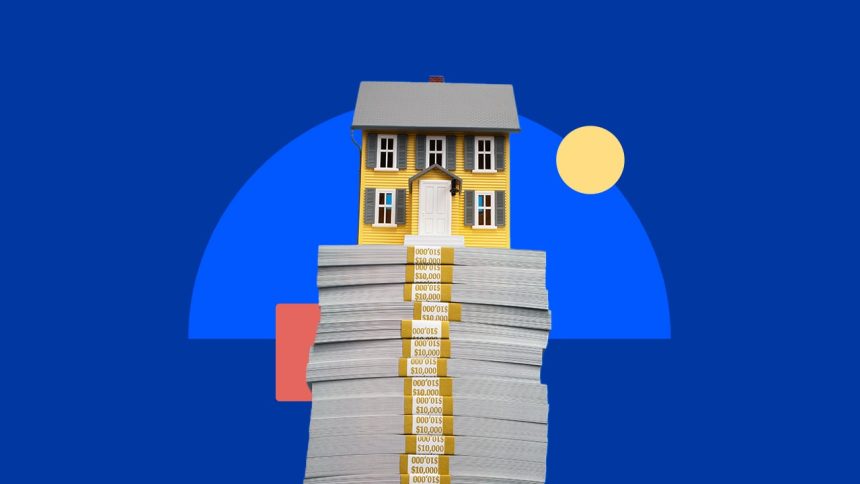Image by PM Images/Getty Images; Illustration by Hunter Newton/Bankrate
Current mortgage rates
| Loan type | Current | 4 weeks ago | One year ago | 52-week average | 52-week low |
|---|---|---|---|---|---|
| 30-year | 6.54% | 6.75% | 6.48% | 6.79% | 6.20% |
| 15-year | 5.75% | 5.93% | 5.80% | 6.00% | 5.40% |
| 30-year jumbo | 6.57% | 6.75% | 6.63% | 6.81% | 6.36% |
The 30-year fixed mortgages in this week’s survey had an average total of 0.32 discount and origination points. Discount points are a way to lower your mortgage rate, while origination points are fees lenders charge to create, review and process your loan.

Shop smarter for mortgage rates
Bankrate connects you to the latest lender offers, tailored to you. Find your low rate today.
Explore mortgage rates
Monthly mortgage payment at today’s rates
The national median family income for 2025 is $104,200, according to the U.S. Department of Housing and Urban Development, and the median price of an existing home sold in July 2025 was $422,400, according to the National Association of Realtors. Based on a 20 percent down payment and a 6.54 percent mortgage rate, the monthly payment of $2,145 amounts to 25 percent of the typical family’s monthly income.
“Affordability is still a challenge,” says Lisa Sturtevant, chief economist at Bright MLS, a listing service in the Mid-Atlantic region. “Some buyers are waiting both for rates and prices to come down before they get into the market.”
What will happen to mortgage rates in 2025?
Mortgage rates haven’t been this low since mid-October 2024. However, some perspective is in order: For the past 10 months, rates have moved in a narrow range. These declines aren’t like the sharp drops seen early in the pandemic, or the big jumps that came in 2022 and 2023, as the Federal Reserve aggressively boosted interest rates.
At its most recent meeting, the Fed decided to leave the federal funds rate untouched. However, Fed Chairman Jerome Powell suggested in recent comments made at Jackson Hole last week that a rate cut might be coming. Mortgage rates didn’t respond to the Fed’s three consecutive cuts last year, though — a reminder that fixed mortgage rates are not set directly by the Fed but by investor appetite, particularly for 10-year Treasury bonds. When there’s uncertainty in the market, investors buy Treasury bonds, which in turn drives yields — and, often, mortgage rates — downward.
“Investors are now increasingly confident that a 25-basis point cut is on the table next month, and some are even speculating that we could see a larger 50-point cut depending on upcoming economic data. This shift in sentiment is helping stabilize rates and boost borrower confidence,” says Samir Dedhia, CEO of One Real Mortgage.
Meanwhile, the U.S. economy seems to be back on track: The gross domestic product grew by an impressive 3 percent in the second quarter, the U.S. Bureau of Economic Analysis said earlier this month. However, President Donald Trump’s tariff policies have been blamed for an increase in inflation, which moved up to 2.7 percent in June and stayed at 2.7 percent for July, making little progress toward the Fed’s inflation target of 2 percent. As of Wednesday afternoon, 10-year Treasury yields were below 4.3 percent.
Why we ask for feedback
Your feedback helps us improve our content and services. It takes less than a minute to
complete.
Your responses are anonymous and will only be used for improving our website.
Help us improve our content
Read the full article here
















